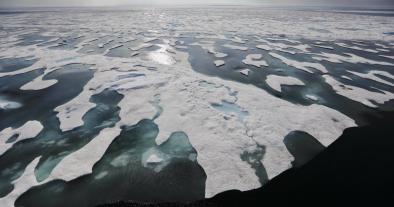Science Source
Arctic Report Card 2016
Highlights
- The average surface air temperature for the year ending September 2016 is by far the highest since 1900, and new monthly record highs were recorded for January, February, October and November 2016.
- After only modest changes from 2013-2015, minimum sea ice extent at the end of summer 2016 tied with 2007 for the second lowest in the satellite record, which started in 1979.
- Spring snow cover extent in the North American Arctic was the lowest in the satellite record, which started in 1967.
- In 37 years of Greenland ice sheet observations, only one year had earlier onset of spring melting than 2016.
- The Arctic Ocean is especially prone to ocean acidification, due to water temperatures that are colder than those further south. The short Arctic food chain leaves Arctic marine ecosystems vulnerable to ocean acidification events.
- Thawing permafrost releases carbon into the atmosphere, whereas greening tundra absorbs atmospheric carbon. Overall, tundra is presently releasing net carbon into the atmosphere.
- Small Arctic mammals, such as shrews, and their parasites, serve as indicators for present and historical environmental variability. Newly acquired parasites indicate northward sifts of sub-Arctic species and increases in Arctic biodiversity.
Related Content
Science Source
| World Weather Attribution
Unusually high temperatures at the North Pole, winter 2016
Science Source
| Geophysical Research Letters
Accelerated increase in the Arctic tropospheric warming events surpassing stratospheric warming events during winter
S.‐Y. Simon Wang, Yen‐Heng Lin, Ming‐Ying Lee et al
Science Source
| Bulletin of the American Meteorological Society
EEE 2016: CMIP5 Model-based Assessment of Anthropogenic Influence on Highly Anomalous Arctic Warmth During November–December 2016
Jonghun Kam, Thomas R. Knutson, Fanrong Zeng et al
Headline

Dec 12, 2017 | Mother Jones
The Arctic is warming faster than at any point in the past 1,500 years


